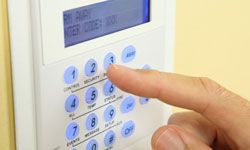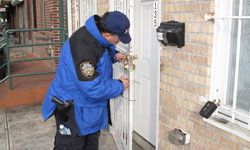Every 15 seconds, a burglar breaks into a home in the United States, steals an average $1,725 worth of property and robs the people who live there of peace of mind for years [sources: McGoey, FBI].
It happened more than 2 million times in 2005, and most if not all of those victims thought their home was pretty secure [source: FBI]. They had locks, lights, neighbors and the occasional dog, alarm system, moat and/or window bars. So how'd it happen?
Advertisement
The depressing fact is, it's actually not that hard to get into most homes. The risk of being seen breaking in is more of a deterrent than a subpar lock, and since most residential robberies happen in broad daylight, that risk is apparently not an overwhelming one [source: FBI]. The problem is that most homes have weak points, and seasoned thieves are pretty good at finding them.
Some weak points are obvious: An open door, for instance, screams "I'm tired of my brand new awesome iPad." A tree house within stepping distance from an upstairs window is probably not a great idea. A ground-floor window left open on a hot summer night is criminal catnip. Most people are more careful than that, though, yet burglary is still relatively commonplace.
The weak points that lead to most burglaries are somewhat more hidden. They're easy enough to fix, though. Thoughtfully securing a home against break-in, while never a sure thing, can at least greatly reduce the risk of falling prey to this particular violation. And that doesn't mean a shark-filled moat. It means making a few changes, additions and behavior modifications that create a less appealing target. In this article, we'll check out five of those fixes and find out how to implement them effectively.
We'll start with one of the most common (and most commonly misunderstood) security additions: the ever-popular, easily implemented, often helpful alarm system.





